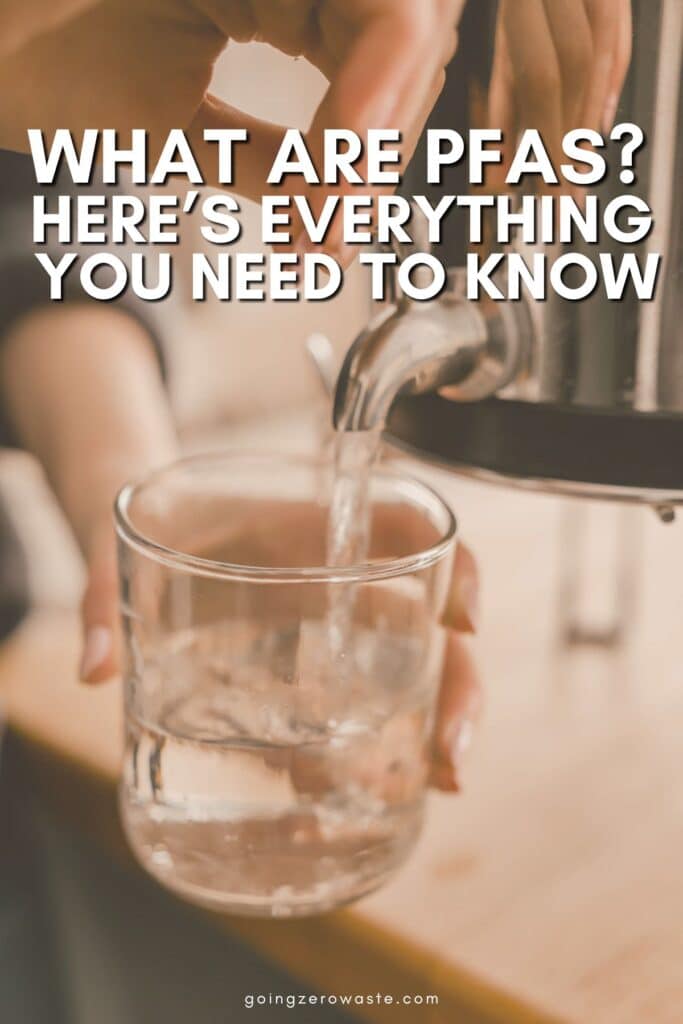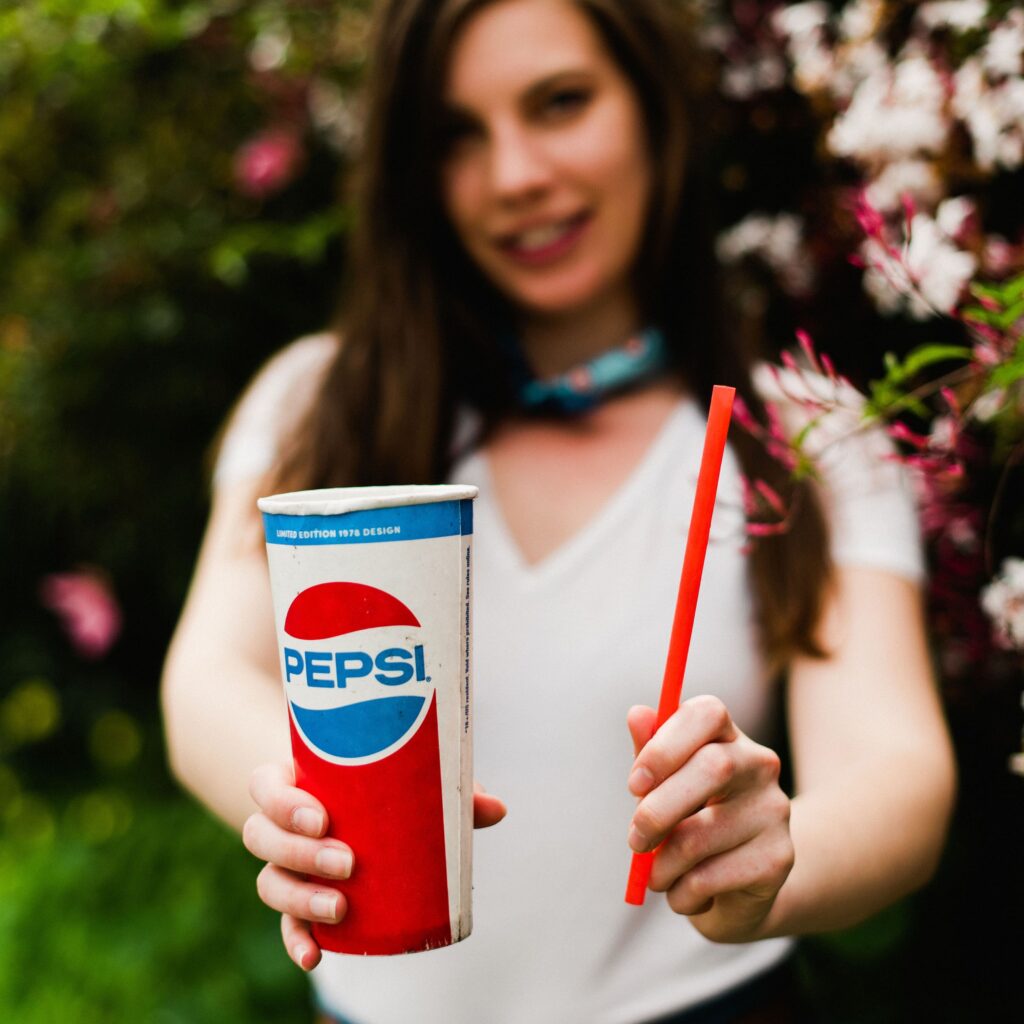Last Updated on August 21, 2024
By now, you’ve probably heard of PFA chemicals. They’re found in a wide array of consumer products, like nonstick cookware and water-resistant materials.
According to a new study by the U.S. Geological Survey, at least 45% of the nation’s tap water is estimated to have one or more types of PFA chemicals.

But what are PFA chemicals, and how do they affect our health? Or end up in our environment?
Here’s everything you need to know about PFAs and ways we can reduce our exposure.
what are pfas?
Essentially, PFAs are manmade chemicals known as “per- and polyfluoroalkyl substances.”
They’re nicknamed forever chemicals because they are nearly indestructible. Most PFAs do not break down, so they can remain in the environment – or humans – forever.
There are more than 12,000 PFA chemicals and not all of them can be detected with current tests. For example, the USGS study on tap water tested for the presence of only 32 types.
PFAs chemistry was discovered in the late 1930s. Since the 1950s, many products commonly used by consumers and industry have been manufactured with or from PFAS.
Because of their widespread use, PFAs have been found in the blood of people and animals all over the world. With repeated exposure, PFAs can build up in people and animals over time.
During production and use, PFAs can migrate into the soil, water, and air. Since many PFAs don’t break down, they remain in the environment and can damage plant cells, have adverse effects on biodiversity, pollute waterways and air.

what is an example of a pfa chemical?
One example of a PFA chemical is Teflon, a brand name for the chemical coating polytetrafluoroethylene (PTFE).
Teflon can be found most infamously in non-stick cookware, like frying pans or baking sheets.
RELATED: 10 Ways to Create a Non-Toxic Kitchen
However, Teflon is used in a wide range of products, both on a consumer-level and within industry. Teflon plays a role in automotive and industrial manufacturing alike. Even electronics (like incorporating Teflon fluoropolymer resins into cable insulation) utilize Teflon.
However, Teflon is most commonly used in nonstick cookware.
The problem with this is when Teflon coated pans get overheated (above 500 degrees F), the Teflon coatings on nonstick cookware start to break down, releasing toxic chemicals into the air.
It only takes 2.5 minutes for a traditional non-stick pan on high heat to exceed 500 degrees F and begin releasing forever chemicals, aka PFAs.
what products contain pfas chemicals?
A wide array of products contain PFAs chemicals, such as:
- Non-stick cookware (like Teflon-coated pots and pans)
- Water-proof attire and gear (like raincoats)
- Stain-resistant coatings (typically used on carpets, upholstery and other fabrics)
- Certain food packaging (like takeout packaging)
Essentially, if it’s water, grease, or stain-resistant – it likely contains some form of PFAs.
Also, it’s worth noting that, since PFAs are in tap water, soil and air, many products cannot technically claim to be “PFA free.”
However, brands can say there are “no intentionally added PFAs”, which simply means they don’t add these chemicals to their products or use them in manufacturing. However, they cannot guarantee that very small amounts from the air, soil, water, etc. Have not found their way onto the product.
Here is a full list of brands and what they have said publicly in regard to their PFA usage.

how can you get exposed to pfas?
You can be exposed to PFAs in several ways, like simply using any of the products listed above daily.
Here are PFA exposure instances the CDC lists:
- Drinking water from PFAS-contaminated municipal sources or private wells.
- Eating fish caught from water contaminated by PFAS (PFOS, in particular).
- Accidentally swallowing or breathing contaminated soil or dust.
- Eating food (e.g., meat, dairy, and vegetables) produced near places where PFAS were used or made.
- Eating food packaged in material that contains PFAS.
- Accidentally swallowing residue or dust from consumer products containing PFAS such as stain resistant carpeting and water repellent clothing.
What does pfa do to your body?
According to the EPA, PFAs harmful effects on the human body are still being researched. At the time, not enough is known about the health effects exposure can have.
However, PFAs can be found in the blood of most people around the world. Some PFAS can build up and stay in the human body for many years but can also decline if the exposure stops.
PFAs blood testing can inform you about the amount of PFAS in your blood. However, be mindful that PFA blood testing doesn’t show how your levels have changed over time, how you were exposed to PFAs, or what your current exposure is.
According to The Department of Health, here are the most concerning health impacts for people exposed to PFAS:
- The effects on the immune system, such as decreased vaccination response.
- Changes in liver function (such as higher cholesterol and elevated liver enzymes).
- Lifetime exposure to PFOA has been associated with kidney cancer.

how to detox pfas from your body?
Unfortunately, PFAs are difficult for the human body to detoxify. They can stay in the body for years, even after reducing exposure to known PFAs. Some estimate that it would take us 4-10 years (or longer) to eliminate existing PFAS from our bodies.
However, PFAs can be excreted through urine, menstrual blood, stool, and breast milk. Sweat cannot excrete these chemicals.
Most of the detoxification is through the liver, though mechanisms of that are unclear.
Make sure to check if your liver is healthy so it can detox your body of PFAs over time. Some ways to keep your liver healthy include eating a healthy, balanced diet, limiting alcohol and smoking, incorporating exercise into your daily routine and getting screened.
how to reduce exposure to pfas
It’s hard to completely reduce exposure to PFAs because they are used in so many products and industries. However, there are certain things that we can control to limit exposure.
- Switch to non-toxic cookware and bakeware that doesn’t contain Teflon. I personally love Caraway, but I also love cast iron cookware, like skillets and dutch ovens.
- Try to reduce the amount of takeout/fast food you get, seeing as there are PFAs in the containers. Instead, opt for making homemade meals whenever possible.
- Be conscious of these labels which may contain PFAs: Teflon, Scotchgard, Stainmaster, and Gore-tex.
- Consider eating a more plant-based diet and reducing fish consumption where you can.
- Consider wearing more natural fabrics, like organic cotton, hemp, and wool. For adventure gear, consider supporting brands working to ditch PFAs, like Patagonia which aims to phase out all PFAs by 2025, or Cotopaxi which is working on solutions too.
What are your thoughts on PFA chemicals? Let me know in the comments!



